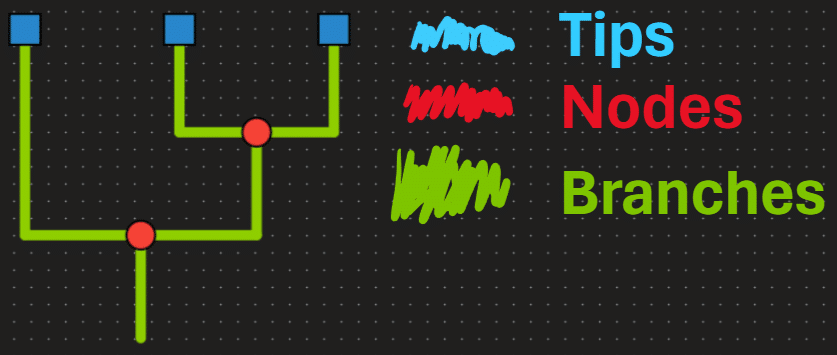Tips
Tips on the phylogeny

Tips are the very ends of the phylogenetic tree and can represent any level of organization of life. In our example phylogeny below, the tips are highlighted in Blue.

Species level phylogenies are the most common. However, the choice of what to use for your tips depends on the focus of the study and the data available.
For example, a phylogeny for a genus of freshwater mussels may use the species as their tips.
A global analysis of Tetrapod’s may use tips that represent entire families of organisms.
While a phylogeny of a single howler monkey species may use individuals as their tips.
Those examples are not theoretical! Each is linked to studies that are all open access or made available by the author!
In summary, the tips of a phylogeny represent what group we are studying and at what detail. However, using a higher classification (e.g. genus over species) does not inherently make for a better study, nor is it always computationally feasible!
Additionally, it is quite common to see phylogenies with mixed levels of tips. Like in our example above, we have Chimpanzees (a species) as well as Rodents (a group of some 2,000 species in the order Rodentia). Grouping tips does not affect the relationships between them. Often, the grouping adds clarity!

